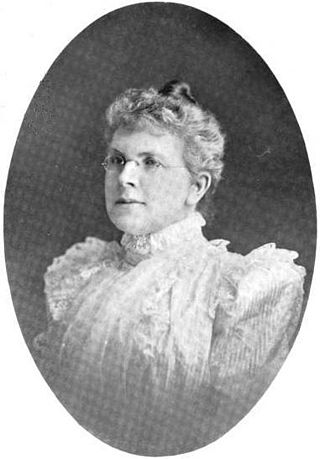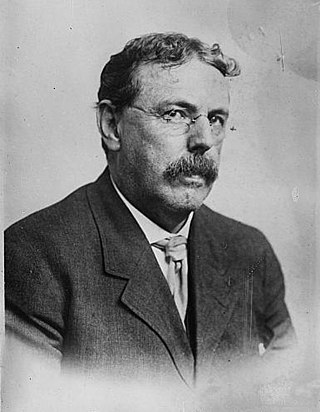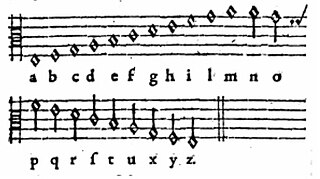In cryptography, a substitution cipher is a method of encrypting in which units of plaintext are replaced with the ciphertext, in a defined manner, with the help of a key; the "units" may be single letters, pairs of letters, triplets of letters, mixtures of the above, and so forth. The receiver deciphers the text by performing the inverse substitution process to extract the original message.

In cryptography, a transposition cipher is a method of encryption which scrambles the positions of characters (transposition) without changing the characters themselves. Transposition ciphers reorder units of plaintext according to a regular system to produce a ciphertext which is a permutation of the plaintext. They differ from substitution ciphers, which do not change the position of units of plaintext but instead change the units themselves. Despite the difference between transposition and substitution operations, they are often combined, as in historical ciphers like the ADFGVX cipher or complex high-quality encryption methods like the modern Advanced Encryption Standard (AES).

The Vigenère cipher is a method of encrypting alphabetic text where each letter of the plaintext is encoded with a different Caesar cipher, whose increment is determined by the corresponding letter of another text, the key.

An autokey cipher is a cipher that incorporates the message into the key. The key is generated from the message in some automated fashion, sometimes by selecting certain letters from the text or, more commonly, by adding a short primer key to the front of the message.

In cryptography, the tabula recta is a square table of alphabets, each row of which is made by shifting the previous one to the left. The term was invented by the German author and monk Johannes Trithemius in 1508, and used in his Trithemius cipher.
In cryptography, coincidence counting is the technique of putting two texts side-by-side and counting the number of times that identical letters appear in the same position in both texts. This count, either as a ratio of the total or normalized by dividing by the expected count for a random source model, is known as the index of coincidence, or IC for short.

William Frederick Friedman was a US Army cryptographer who ran the research division of the Army's Signal Intelligence Service (SIS) in the 1930s, and parts of its follow-on services into the 1950s. In 1940, subordinates of his led by Frank Rowlett broke Japan's PURPLE cipher, thus disclosing Japanese diplomatic secrets before America's entrance into World War II.
A straddling checkerboard is a device for converting an alphanumeric plaintext into digits whilst simultaneously achieving fractionation and data compression relative to other schemes using digits. It also is known as a monôme-binôme cipher.
In classical cryptography, the running key cipher is a type of polyalphabetic substitution cipher in which a text, typically from a book, is used to provide a very long keystream. The earliest description of such a cipher was given in 1892 by French mathematician Arthur Joseph Hermann. Usually, the book to be used would be agreed ahead of time, while the passage to be used would be chosen randomly for each message and secretly indicated somewhere in the message.
The affine cipher is a type of monoalphabetic substitution cipher, where each letter in an alphabet is mapped to its numeric equivalent, encrypted using a simple mathematical function, and converted back to a letter. The formula used means that each letter encrypts to one other letter, and back again, meaning the cipher is essentially a standard substitution cipher with a rule governing which letter goes to which. As such, it has the weaknesses of all substitution ciphers. Each letter is enciphered with the function (ax + b) mod 26, where b is the magnitude of the shift.

Elizebeth Smith Friedman was an American cryptanalyst and author who deciphered enemy codes in both World Wars and helped to solve international smuggling cases during Prohibition. Over the course of her career, she worked for the United States Treasury, Coast Guard, Navy and Army, and the International Monetary Fund. She has been called "America's first female cryptanalyst".
In cryptography, the ADFGVX cipher was a manually applied field cipher used by the Imperial German Army during World War I. It was used to transmit messages secretly using wireless telegraphy. ADFGVX was in fact an extension of an earlier cipher called ADFGX which was first used on 1 March 1918 on the German Western Front. ADFGVX was applied from 1 June 1918 on both the Western Front and Eastern Front.
In cryptography, a classical cipher is a type of cipher that was used historically but for the most part, has fallen into disuse. In contrast to modern cryptographic algorithms, most classical ciphers can be practically computed and solved by hand. However, they are also usually very simple to break with modern technology. The term includes the simple systems used since Greek and Roman times, the elaborate Renaissance ciphers, World War II cryptography such as the Enigma machine and beyond.

The M-94 was a piece of cryptographic equipment used by the United States Army, consisting of several lettered discs arranged as a cylinder. It was also employed by the US Navy, under the name CSP 488.
The Two-square cipher, also called double Playfair, is a manual symmetric encryption technique. It was developed to ease the cumbersome nature of the large encryption/decryption matrix used in the four-square cipher while still being slightly stronger than the single-square Playfair cipher.

The Baconian theory of Shakespearean authorship contends that Sir Francis Bacon, philosopher, essayist and scientist, wrote the plays, which are publicly attributed to William Shakespeare. Various explanations are offered for this alleged subterfuge, most commonly that Bacon's rise to high office might have been hindered if it became known that he wrote plays for the public stage. The plays are credited to Shakespeare, who, supporters of the theory claim, was merely a front to shield the identity of Bacon. All but a few academic Shakespeare scholars reject the arguments for Bacon authorship, as well as those for all other alternative authors.

Elizabeth Wells Gallup was an American educator and exponent of the Baconian theory of Shakespearean authorship.

Dr. Orville Ward Owen was an American physician, and exponent of the Baconian theory of Shakespearean authorship. Owen claimed to have discovered hidden messages contained in the works of Shakespeare/Bacon. He deciphered these using a device he invented called a "cipher wheel". The alleged discoveries were published in Owen's multi-volume work Sir Francis Bacon's Cipher Story (1893–95).

"Colonel" George Fabyan was a millionaire businessman who founded a private research laboratory. Fabyan's laboratory pioneered modern cryptography & was the forerunner of the NSA. The National Security Agency has recognized Riverbank Laboratories as the birthplace of U.S. cryptology.

In cryptography, a music cipher is an algorithm for the encryption of a plaintext into musical symbols or sounds. Music-based ciphers are related to, but not the same as musical cryptograms. The latter were systems used by composers to create musical themes or motifs to represent names based on similarities between letters of the alphabet and musical note names, such as the BACH motif. Whereas music ciphers were systems typically used by cryptographers to hide or encode messages for reasons of secrecy or espionage.











